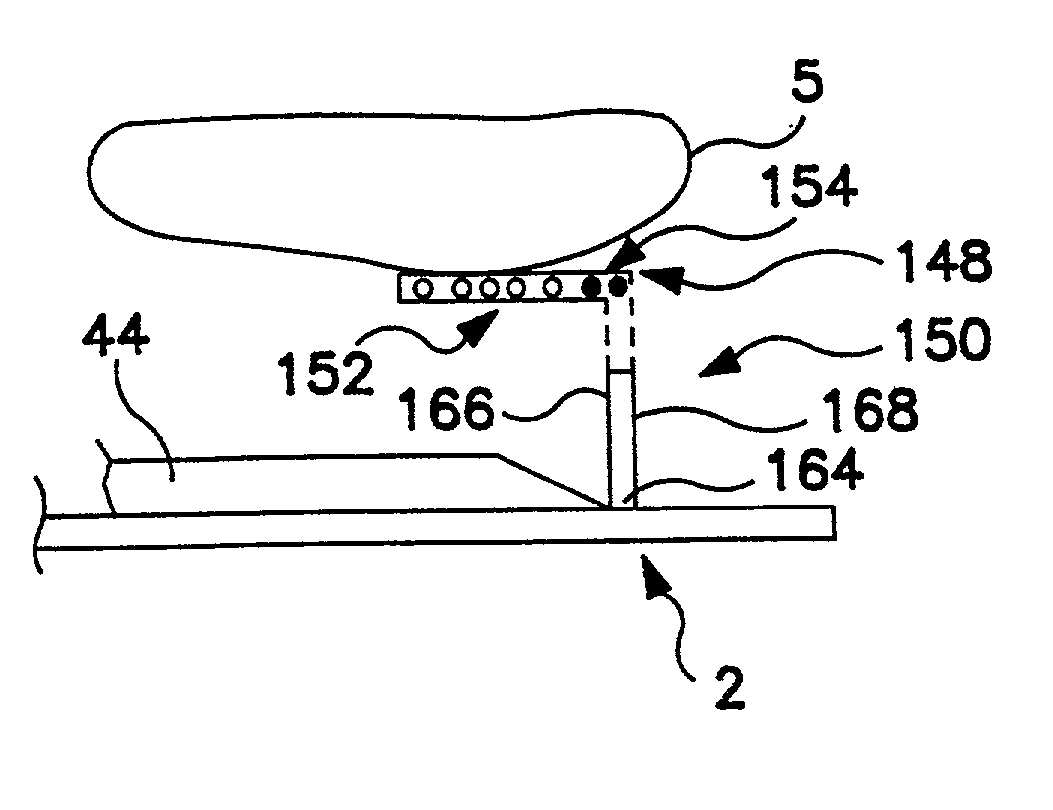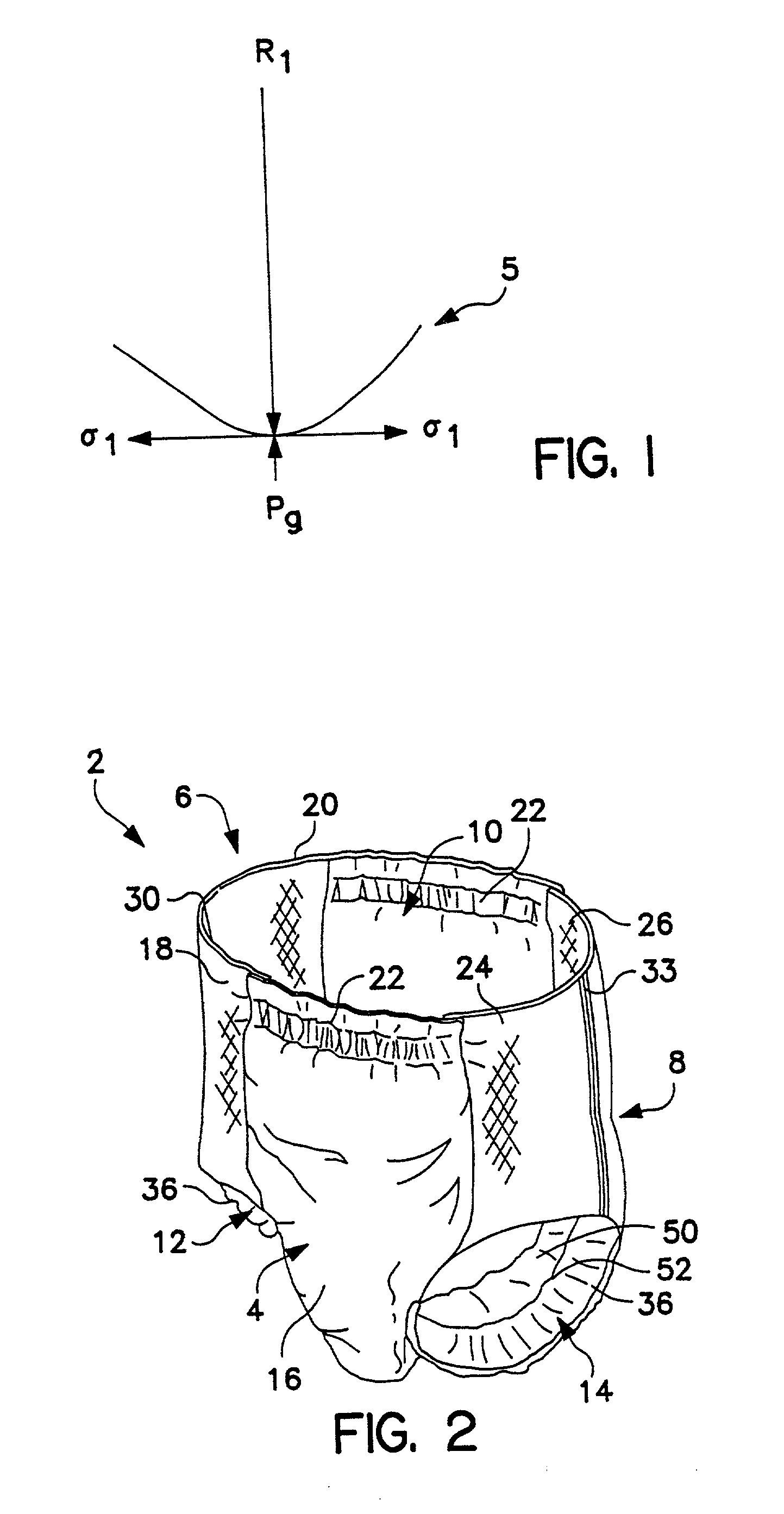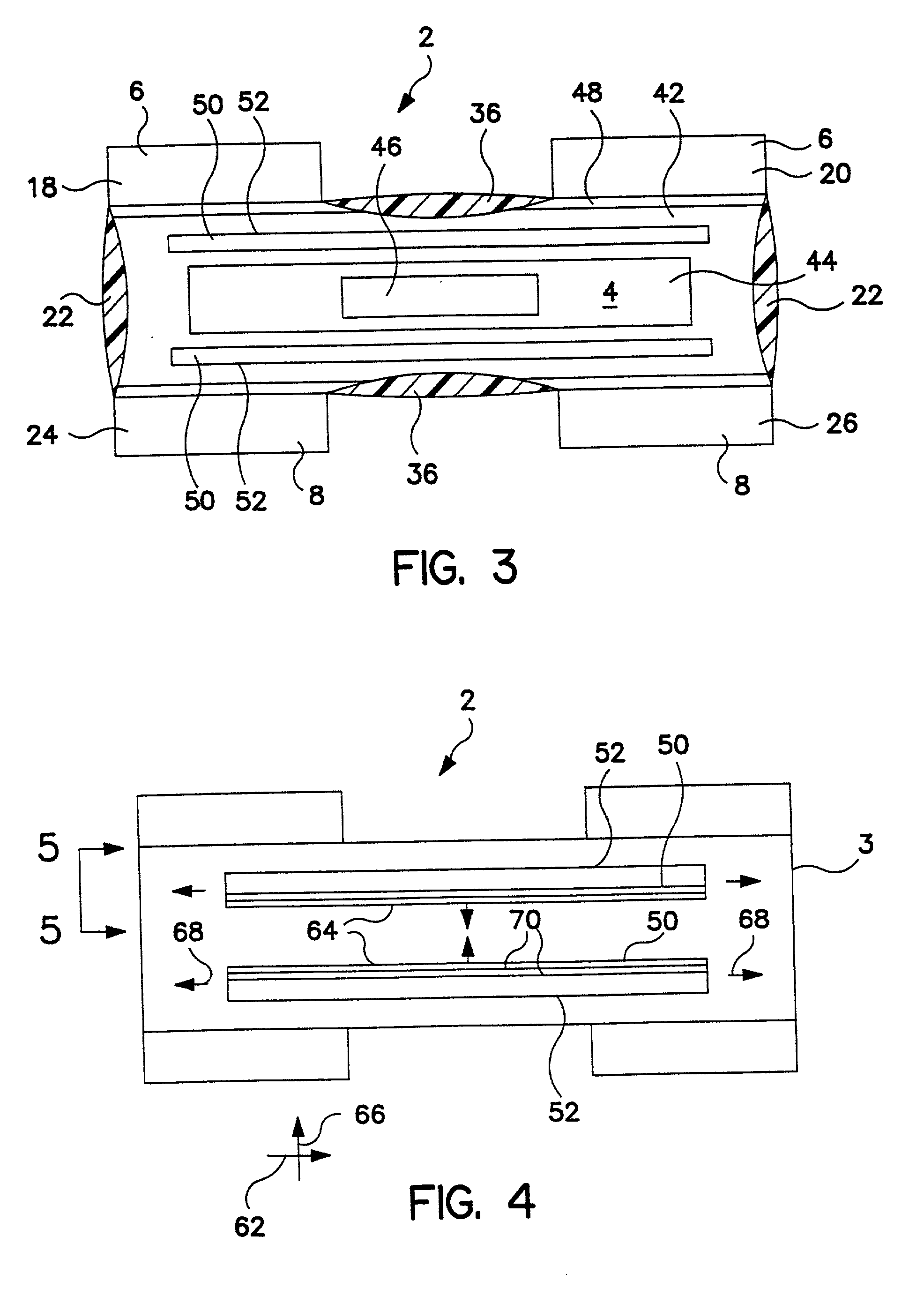Body fluid sealing extensible gaskets for personal care products
a technology of body fluid and gasket, which is applied in the field of pants-like absorbent garments, can solve the problems of gasket pulling away from the wearer's body, containment flap, and red marks on the wearer's skin,
- Summary
- Abstract
- Description
- Claims
- Application Information
AI Technical Summary
Benefits of technology
Problems solved by technology
Method used
Image
Examples
example 1
[0087] A necked spunbond comprising of a 0.4 osy layer of PRISM bicomponent spunbond fibers, as taught in U.S. Pat. No. 5,382,400 to Pike et al., and necked to about 45% of its original width, was tested according to the below listed test procedures and found to have a CD Young's modulus of 2.97 psi / %, an MD Young's modulus of 87.73 psi / %, an MD / CD Young's modulus ratio of 29.54, and a hydrohead of 3.67 mbar.
example 2
[0088] A spunbond / meltblown / spunbond laminate comprising two spunbond layers of a 0.4 osy layer of PRISM bicomponent spunbond fibers, as taught in U.S. Pat. No. 5,382,400 to Pike et al., and necked to about 45% of their original width, with a 0.2 osy layer of meltblown Kraton G filaments between the spunbond layers, was tested according to the below listed test procedures and found to have a CD Young's modulus of 3.70 psi / %, an MD Young's modulus of 91.02 psi / %, an MD / CD Young's modulus ratio of 24.60, and a hydrohead of 11.33 mbar.
example 3
[0089] A spunbond / meltblown laminate comprising a single spunbond layer of a 0.4 osy un-necked layer of PRISM bicomponent spunbond fibers, as taught in U.S. Pat. No. 5,382,400 to Pike et al., with a 0.2 osy layer of meltblown KRATON G filaments laminated to the spunbond layer, was tested according to the below listed test procedures and found to have a CD Young's modulus of 28.89 psi / %, an MD Young's modulus of 0.90 psi / %, an CD / MD Young's modulus ratio of 32.10, and a hydrohead of 14.50 mbar. It will be appreciated that the low Young's modulus direction of this material example is ninety degrees different from the previous examples, but the material may still be suitable for use with certain aspects of the present invention.
[0090] Test Methods
[0091] Elongation Testing:
[0092] A one inch strip of each material was evaluated on an Instron automated stress-strain tester. Specifically, the gap size between clamps on each side of the material during the stress-strain test was set at 0.25...
PUM
 Login to View More
Login to View More Abstract
Description
Claims
Application Information
 Login to View More
Login to View More - R&D
- Intellectual Property
- Life Sciences
- Materials
- Tech Scout
- Unparalleled Data Quality
- Higher Quality Content
- 60% Fewer Hallucinations
Browse by: Latest US Patents, China's latest patents, Technical Efficacy Thesaurus, Application Domain, Technology Topic, Popular Technical Reports.
© 2025 PatSnap. All rights reserved.Legal|Privacy policy|Modern Slavery Act Transparency Statement|Sitemap|About US| Contact US: help@patsnap.com



